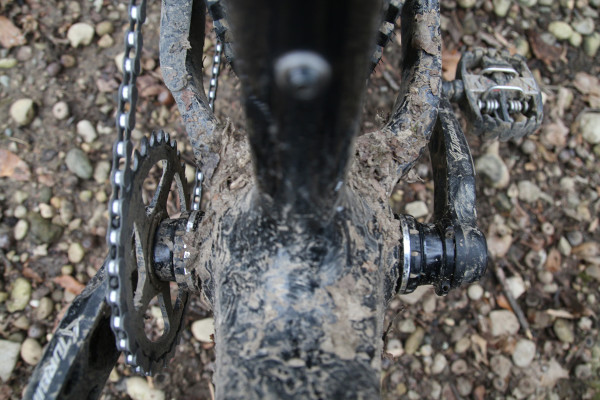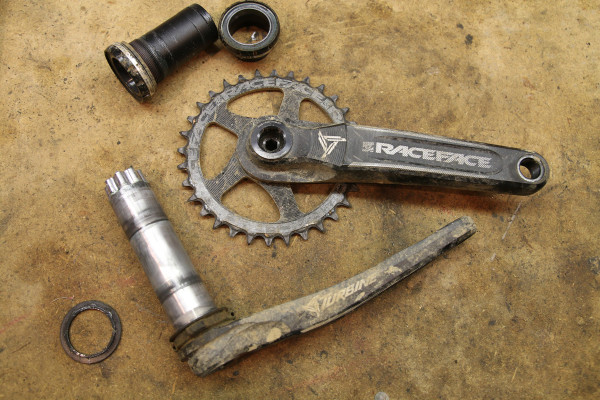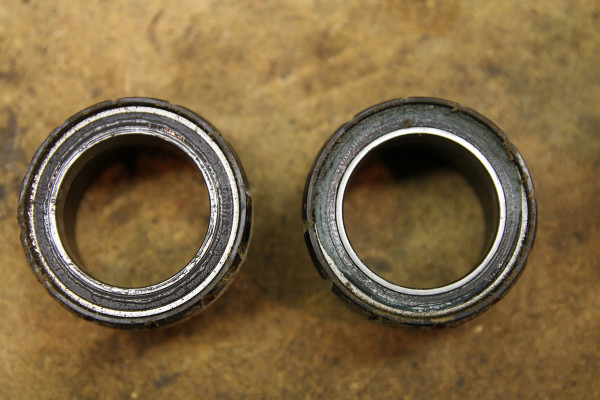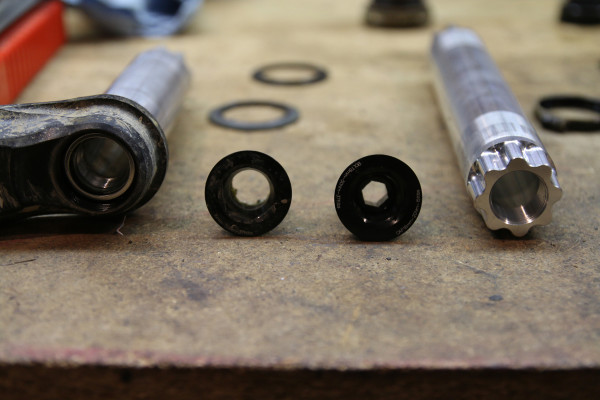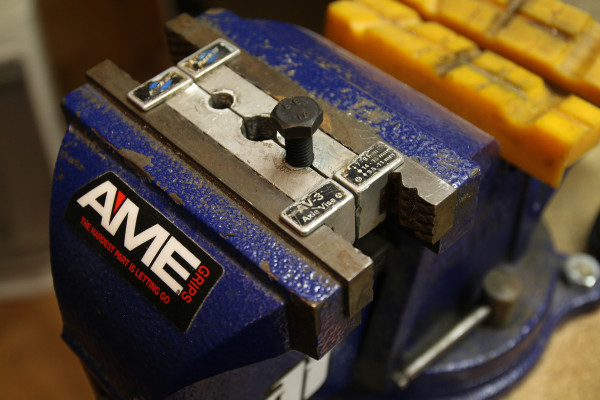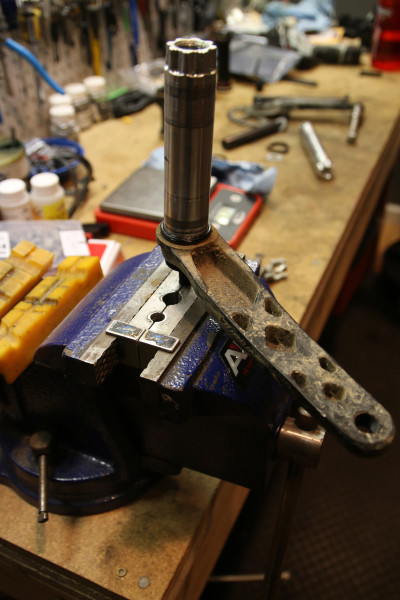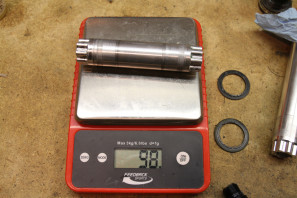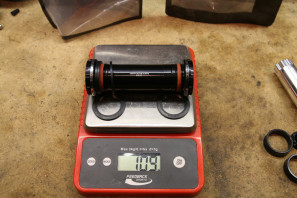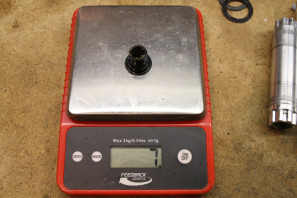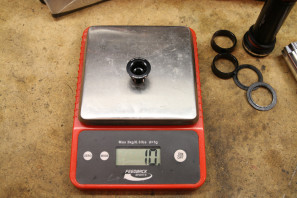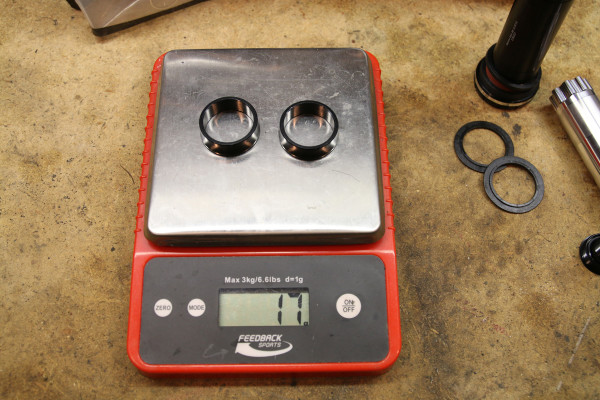First introduced on the Next SL carbon crankset, the Race Face Cinch crankset interface promised a revolution in crankset design. No longer limited to a single spindle or chainring configuration, Cinch meant compatibility for a much wider range of bikes while giving the end user an extremely versatile product.
After the Next SL got its legs, Race Face introduced the Turbine Cinch – their first aluminum crank with the design. Not only did the Turbine represent a much more economical Cinch crankset, but provided an option for fans of metal rather than carbon for their crank arms. After the weigh in and installation, it was out to the trails for a season of abuse. See how they fared plus their new assignment next…
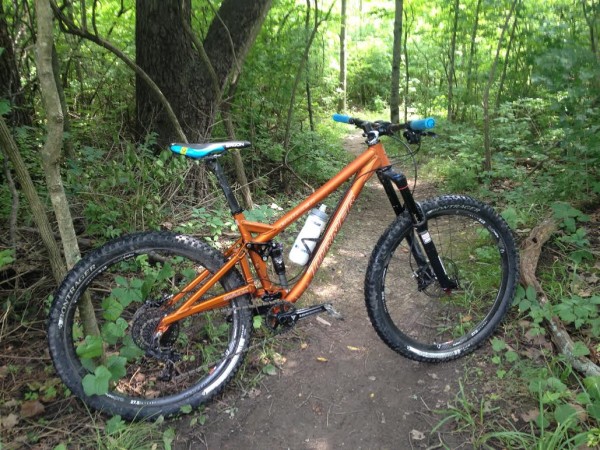
After spending nearly a full season on our Turner Burner test rig, the changing seasons called for a change of spindles. Honestly, the versatility that the Cinch system provides is one of its best features. As fast as bottom bracket, chainring, and rear spacing standards are changing, it’s really nice to have a crankset that will work with almost anything with the right parts.
Performance of the Turbine Cinch on the trail is exactly what you want – stiff, light, and easy to dial in for your riding style. One of the few cranksets that can run 1x, 2x, 2x/bash, or even 3x the crank seems like a great option for those who may waffle between drive train set ups based on the terrain. Combined with a Race Face narrow wide chainring, the set up survived a few Enduro races plus quite a few trail miles mostly unscathed.
With Winter making its presence known, my thoughts turned to a new build that featured fatter tires. That meant removal of the Turbine crank from the Turner and installation on a Borealis Echo. Available in spindle lengths for either 135 offset/170 or 190mm fat bike drop outs, the crankset should fit any fat bike on the market. Replacement spindles retail for $89.95 which includes the needed spacers and replacement bolt.
Removal of the crankset is straight forward – a single 8mm self extracting allen will remove the arm and the spindle/arm will slide out the other side. The bottom bracket is easily removed with the included wrench. After a season of use the crank arm with their semi-squared edges showed a bit of rubbing but nothing to be concerned about. The spindle, although dirty was still smooth and without any scarring.
Really, the only sign of wear comes from the non-drive side bottom bracket bearing. Still turning smoothly on the bike, the bearing is a bit notchy when turning it by hand. We’d like to see longer bearing life, but after cleaning the bearing and using a pick to remove the seal and repack with grease, it felt much better.
Machined pockets usually equates to mud catchers, but in this case the back of the Turbine crank arms stayed relatively clean. Over the course of the summer neither the crank/chainring or bottom bracket needed additional adjustment or tightening.
Removal of the spindle from the non drive crank arm is a bit more involved since they are not fitted with a self extracting bolt from the factory. Instead, the spindle is attached with a 16mm allen bolt which can present a problem since that size isn’t included in standard allen wrench kits.
Fortunately, there are a number of ways to tackle the issue. Maybe the simplest is to order the Race Face 8-16mm hex adapter tool when you order the crank. The clever little tool is basically a 16mm hex fitting with an 8mm hex tunneled through the middle. Then there’s the fact that 16mm and 5/8″ allen wrenches are one and the same, so you should be able to find a wrench if you don’t want to wait on the Race Face tool.
And what if you’ve waited until all the stores are closed and want to get it done now? If you happen to have a bolt with a 5/8″ head and a vice, you’re in luck. Place the bolt in an axle vice (or skip it if you don’t care about the bolt), and it makes a perfect set up to remove the spindle. The new spindles include a self extracting bolt set so you only have to do this once.
Once the old spindle is removed, insert the new spindle into the non-drive crank arm and add the new bolt. The steel washer should go under the self extracting bolt (check to make sure the old steel washer isn’t still in the crank, you only need one). Then the nylon washer should be placed inside the self extracting cap and threaded into place over the self extracting bolt. Tighten to the specified torque printed on the cap.
After replacing the spindle, the crankset will install just like any other Cinch model on your fat bike. If you’re running the 190mm spindle on a 100mm BSA bottom bracket you will need to use the included spacers to take up the extra room. If you were wondering about that 120mm threaded shell on the new Fezzari Fat Bike, the extra wide shell is designed so that you don’t have to use the spacers above.
However, a 120mm threaded shell means you won’t be able to run the 170mm spindle which is still a bit of a question mark. The 190 spindle provides the optimal chainline for fat bikes with 190/197mm axle spacing, but has a much wider q-factor (222 vs 202mm). A number of companies have been experimenting with the 170mm length spindles and chainrings that space out the chainline to the outside of the crank. We’re going to investigate the differences between the two and will report back.
Useful RF Tech Links:
As for the weight, on the left is the standard 30mm spindle for 68/73 BSA bottom brackets or PF30/BB30, and on the right is the 190mm fat bike spindle. The same goes for the bottom bracket below, 68/73 BSA vs 100mm BSA. Under that is the stock 16mm spindle bolt compared to the replacement self extracting model. Technically, if the 3 grams really bothers you, the lighter bolt can be re-used.
Most fat bikes running the spindle for 190mm dropouts will also need the previously mentioned spacers.
Final Thoughts:
In the end there isn’t much not to like about the Turbine Cinch crankset. Without breaking the bank, the $269.99 cranks provide a durable, high performance option for just about any ride. Better yet, should you change your mind and want to ride something different in the future? Cinch has you covered.

